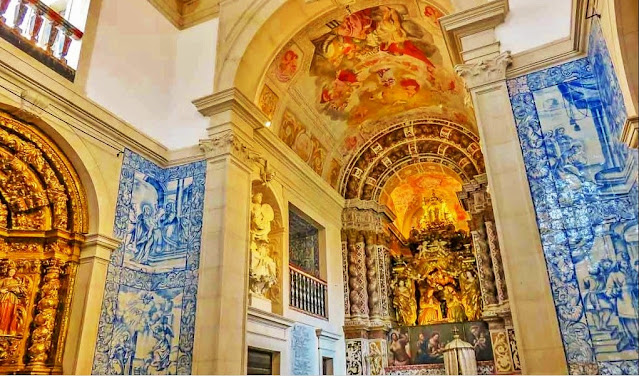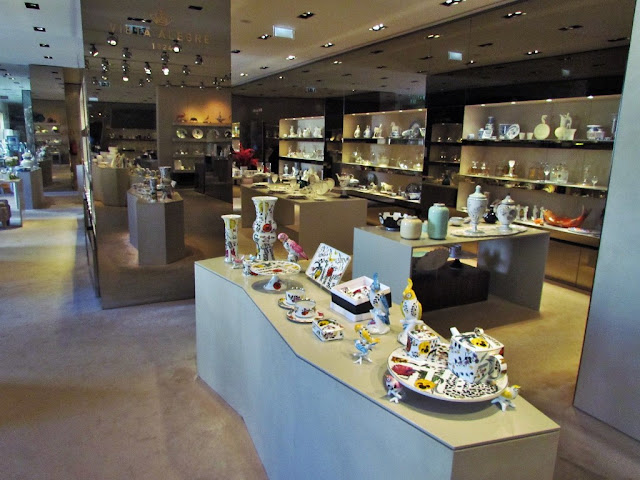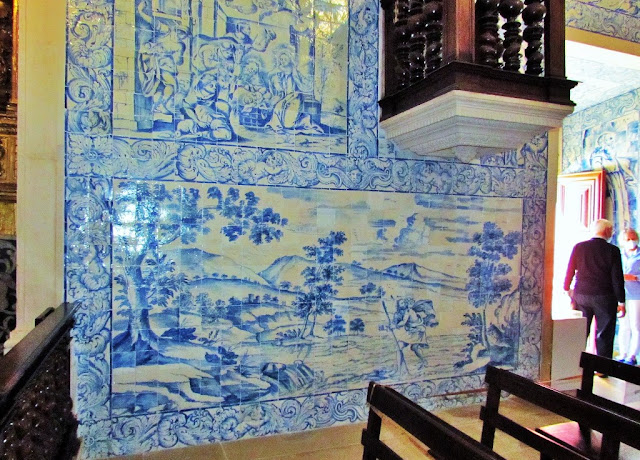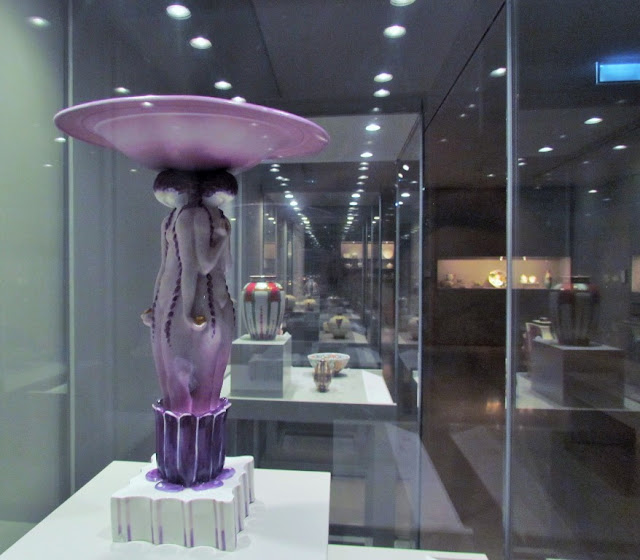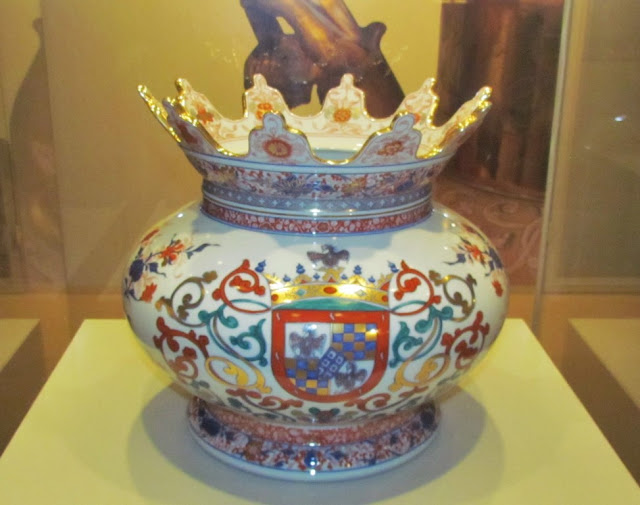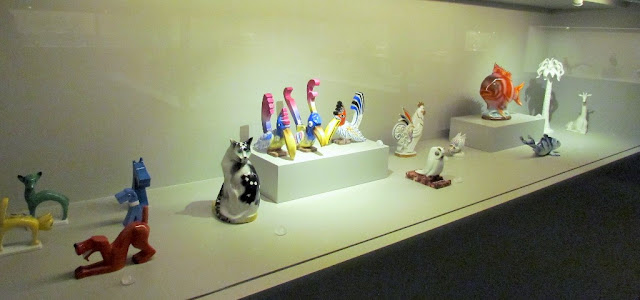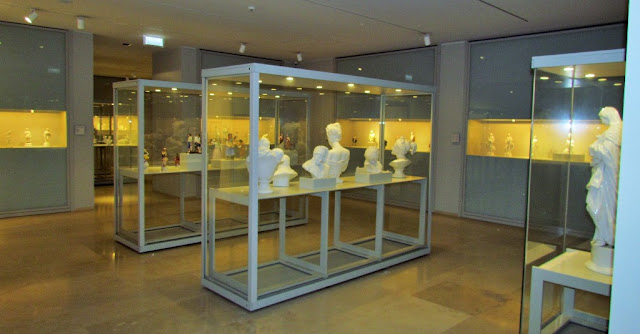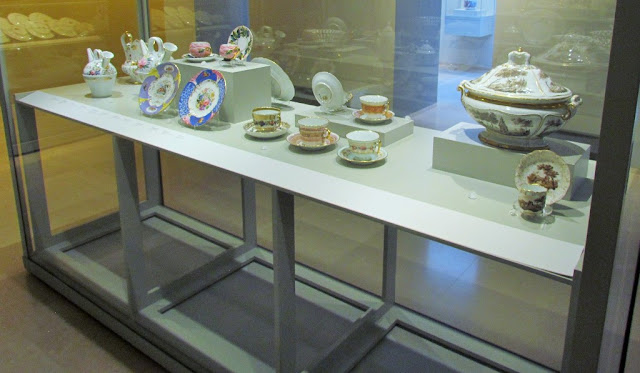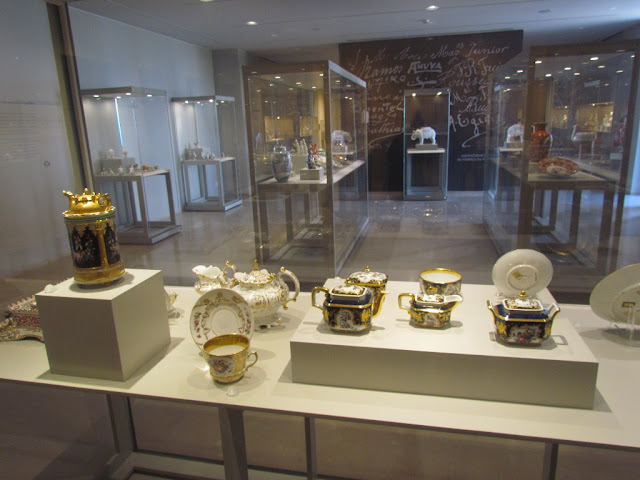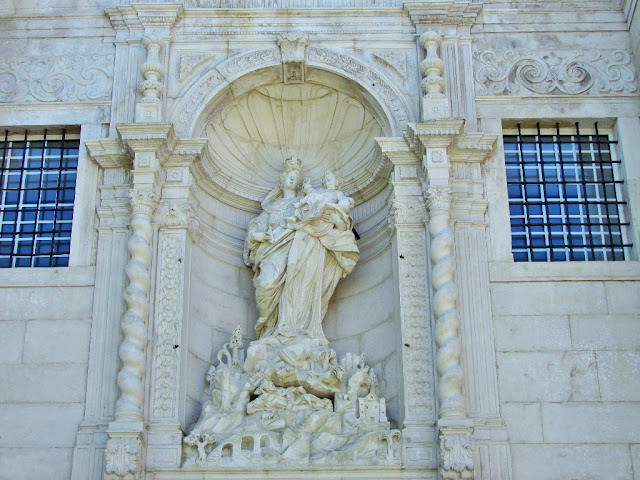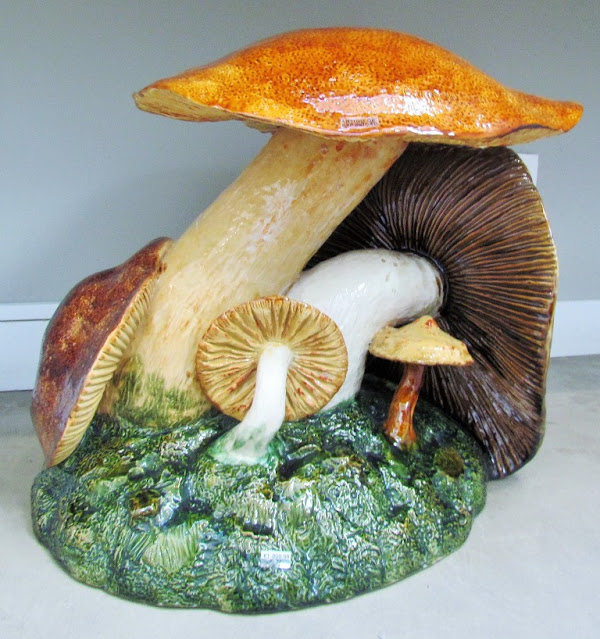Fábrica de Porcelana da Vista Alegre is a Portuguese porcelain factory founded in 1824, located near Ílhavo, being the oldest in the Iberian Peninsula.
The company, due to its history and tradition, remains the most emblematic of the eleven industrial units that make up the group, producing around 10 million pieces a year, including decorative and domestic porcelain.
In addition to the industrial facilities, the Vista Alegre real estate complex also includes a Chapel, a Theater and a Museum.
The Chapel of Nossa Senhora da Penha de França, or Chapel of Vista Alegre, was part of the Quinta da Ermida acquired by José Ferreira Pinto Basto. In this Chapel is the most beautiful Baroque tomb in Portugal, the tomb of the Bishop of Miranda, D. Manuel Moura Manuel, which he had commissioned from the French sculptor Claude Laprade (1682 - 1736) and which was built in 1699.
THE VISTA ALEGRE MUSEUM
https://vistaalegre.com/pt/t/vaa_visitemuseudavistaalegre_omuseuvistaalegre-1
It has been a tradition of the factory to preserve and keep the memory of the Vista Alegre’s artistic porcelain production alive, inherent in the prestige achieved by the brand during the 19th century. Although the best pieces have been collected since the beginning of production, the first organised museum appeared only in 1947 and it was housed in the palace, near the Capela da Vista Alegre. In 1964, the museum was expanded and opened to the public, being transferred to the old factory buildings, a place with space to accommodate the heritage of our porcelain pieces, documents and drawings. These facilities were renovated in 2001.
Between 2014 and 2016 the Museu Vista Alegre underwent major improvements, which included the rehabilitation of the existing building and the expansion of the exhibiting spaces, including the integration of two old ovens of the company in the reception area of the museum to make them stand out.
The new museum intends to show the factory’s history, the aesthetic evolution of porcelain production and its significance in Portuguese society of the 19th and 20th centuries through one of the most complete museum collections of that kind, made up of more than 30.000 pieces.
The building of the old Creche da Vista Alegre [kindergarten] was also renovated and reconverted into an educational facility for the Museu Vista Alegre. Dating back to 1944, this space was for caring for the workers’ children, thus providing important social support for the community. In the future, its use will be to stimulate a rich and diversified cultural programming which may promote the connection between factory and visitor, creating learning opportunities, namely through ceramic painting or paste modelling.
The Museu Vista Alegre has taken on the mission of promoting the protection, investigation and interpretation of the industrial heritage of the Fábrica de Porcelana da Vista Alegre [porcelain factory], inspiring and motivating visitors to get to know the ceramic culture through the collections as well as the values of Vista Alegre.
Fulfilling its strategical goals, the museum aims at having an international dimension, at becoming an inspiring space; open to sharing and promoting knowledge, oriented towards the study and interpretation of ceramic culture.
Strategic Goals:
- To grant the collection and protection of the industrial heritage of the Fábrica de Porcelana da Vista Alegre, fulfilling its museum functions;
- To boost the public profile of the museum and to provide quality service to the client;
- To undertake credible research for the benefit of the general public, and to interpret and communicate research results;
- To improve the quality of interpretation and accessibility of museum collections and of the industrial heritage of the Fábrica de Porcelana da Vista Alegre;
- To grant efficient and sustained management of financial and heritage resources.

Águeda;
Aguada de Baixo;
Albergaria-a-Velha;
Alvarenga + Paradinha;
Anadia;
Arões + Trebilhadouro;
Arouca + Meitriz;
Arouca Unesco Global Geopark;
Avanca;
AVEIRO;
Bussaco;
Castelo de Paiva;
Cortegaça;
Costa Nova;
Covelo de Paivó + Janarde + Drave;
Curia;
Esmoriz;
Estarreja;
Espinho;
Fábrica da Vista Alegre;
Freita Mountain (Serra da Freita);
Ílhavo;
Mealhada;
Murtosa;
Oliveira de Azeméis;
Oliveira do Bairro;
Ovar;
Palhaça (Aveiro);
Paramos;
Pateira de Fermentelos;
Praia da Barra;
Praia da Vagueira;
Ria de Aveiro;
Salreu;
Sangalhos;
Santa Maria da Feira;
São João da Madeira;
Sever do Vouga;
Silvalde;
Sosa (Vagos);
Vagos;
Vale de Cambra;
Válega;








